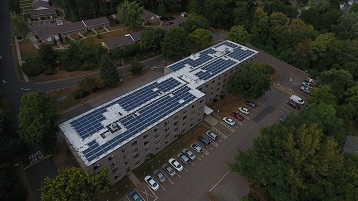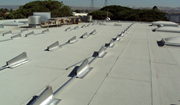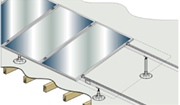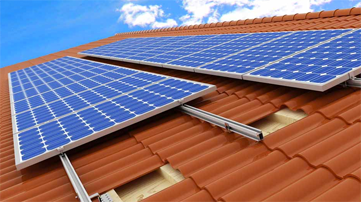Choosing the Optimal Solar Panel Installation Method
The type of racking or mounting equipment impacts how well your solar panels function. Below, we outline the different types of roof-mounted solar panels which are available on the market.

Flat Roof Ballasted Solar Array
A flat roof installation is the optimal method for installing solar on your building. It offers flexibility for orienting and tilting the solar panels for maximum production. This installation approach is more common on commercial and industrial installations and is perhaps one of the least complicated. The main benefit is that there are usually no roof penetrations because the racking is ballasted, using blocks to meet wind load requirements. MSL Group engineers systems to meet your requirements.

Flat Roof Mechanically Fastened Solar Array
If a flat roof cannot handle the load of a ballasted racking system, then a mechanically-fastened mounting option can be utilized. Traditional rooftop systems are mounted to the posts secured in the roof beams. Special roof leak protection is added to each penetration to stop leaks. These attached systems work for any size, and hold tight even in windy areas. MSL Group’s mechanical engineers confirm the structural integrity of each

Hybrid Mounted – Ballasted & Mechanically Fastened.
Lorem Ipsum is simply dummy text ot the printing and typesetting industry.
Lorem Ipsum has been the industry’s standard dummy text ever since the 1500s.

Pitched Roof Mounted Solar Array
Perhaps the most common type of solar panel installation seen in residential solar systems is the pitched roof mounting option, which involves installing panels on non-flat (or angled) roofs. Due to the angle and complexity of solar equipment used to keep solar panels in place on a pitched surface like a residential roof, this type of installation can be more costly than a flat roof ballasted install.


